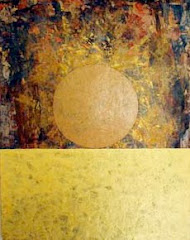Insulating under your earth oven hearth is a critical step that should never be eliminated. A well insulated oven will heat up faster, retain heat much better and use far less fuel than an uninsulated oven.
You have a number of options for insulating under the hearth, and I'm assuming you have a heat sink under your fire bricks such as a poured 4" concrete slab or 4" thick solid concrete blocks.
The insulation would go under the heat sink, not of top of it.
A real low tech method (promoted by Kiko Denzer) of insulating would be to use sawdust and clay slip. This is not an excellent insulator, but it does work, and the price is great. That means it's generally free.
Going up a notch would be to use perlite or vermiculite mixed with clay slip or Portland cement. Although not free, the price is quite reasonable and perlite and vermiculite are better insulators than sawdust.
Another possibility would be to use foam glass. This has great insulation qualities, but it is expensive. Although used by many professional oven builders, it is not accepted by all. I spoke to one today who told me that he has dismantled some ovens and found the foam glass to have completely disintegrated.
The oven builder who would not sell foam glass does sell a product called Super Isol which also is not cheap, but does have an extremely high insulation value.
Of course, professionals often disagree, but if you're working with a real mason, I would do what he or she recommends. Generally, they have been building ovens for years and have a whole history of experience.
Not being a mason, I have found it quite easy to locate and use perlite or vermiculite as insulation for the ovens I've built.
An oven base filled with 4" of perlite, awaiting solid concrete blocks and fire bricks
Fire bricks sitting on top of solid concrete block that rest on cement board. Underneath the cement board is the perlite.
You have a number of options for insulating under the hearth, and I'm assuming you have a heat sink under your fire bricks such as a poured 4" concrete slab or 4" thick solid concrete blocks.
The insulation would go under the heat sink, not of top of it.
A real low tech method (promoted by Kiko Denzer) of insulating would be to use sawdust and clay slip. This is not an excellent insulator, but it does work, and the price is great. That means it's generally free.
Going up a notch would be to use perlite or vermiculite mixed with clay slip or Portland cement. Although not free, the price is quite reasonable and perlite and vermiculite are better insulators than sawdust.
Another possibility would be to use foam glass. This has great insulation qualities, but it is expensive. Although used by many professional oven builders, it is not accepted by all. I spoke to one today who told me that he has dismantled some ovens and found the foam glass to have completely disintegrated.
The oven builder who would not sell foam glass does sell a product called Super Isol which also is not cheap, but does have an extremely high insulation value.
Of course, professionals often disagree, but if you're working with a real mason, I would do what he or she recommends. Generally, they have been building ovens for years and have a whole history of experience.
Not being a mason, I have found it quite easy to locate and use perlite or vermiculite as insulation for the ovens I've built.
An oven base filled with 4" of perlite, awaiting solid concrete blocks and fire bricks
Fire bricks sitting on top of solid concrete block that rest on cement board. Underneath the cement board is the perlite.






3 comments:
My name is Matt Holop, Regional Manager for Pittsburgh Corning Foamglas. The only reason my product would disintegrate, as you say, is if moisture sat on top face of block during extended freeze/thaw cycles.
Eliminating moisture on surface will eliminate this condition.
Thanks very much for your comment, but I'm not sure how you would eliminate moisture if you live in the northeast where temperature fluctuations can be substantial. Suppose you've used foam glass under your hearth and your oven is outdoors and not used during the winter. Wouldn't moisture form unless you fired your oven fairly frequently?
Stu
In Foamglas Slab carbon reacts with oxygen, creating carbon dioxide, which creates the insulating bubbles in the Foamglas. CO2 accounts for more than 99% of the gas in the cellular spaces.
Post a Comment